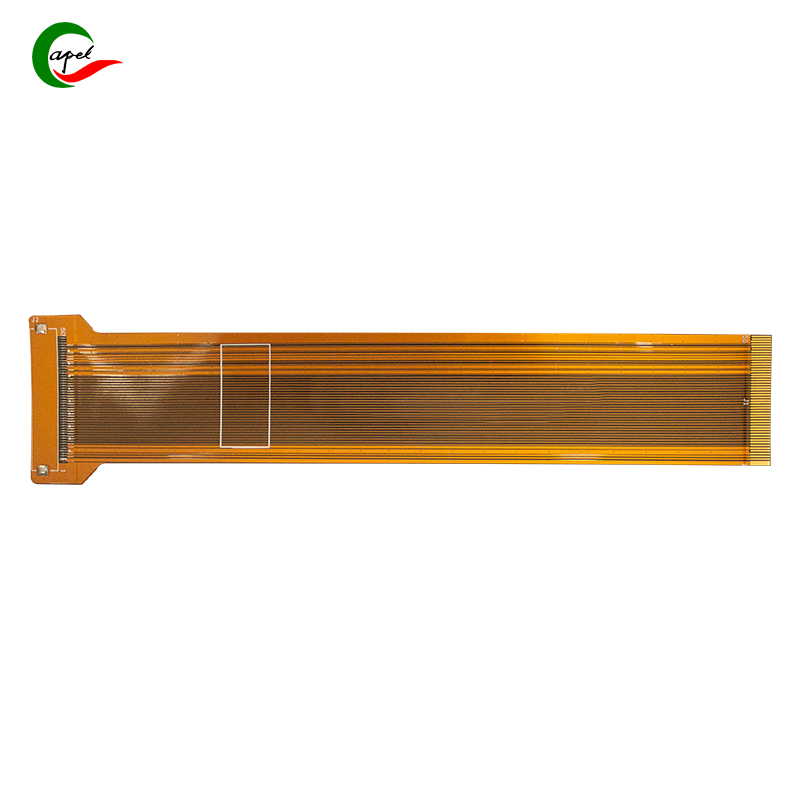Date: 2025-08-28
Pop the hood of a modern car, or, more accurately, peer behind its mirrors, bumpers, and roof liners. You'll find a network of eyes—smart cameras for parking, driving, and monitoring. These aren't your grandfather's grainy reverse cameras. They are high-resolution, data-hungry computers that see the world in real-time.
But there's a problem. Cars are brutal environments. They are packed tight, vibrating constantly, and exposed to extreme temperatures. How do you connect a camera buried in the corner of a headliner to the main computer, often meters away, through a maze of metal and plastic? The answer lies in a technology that bends, folds, and twists its way through it all: the Flexible Printed Circuit (FPC).
Imagine trying to route a thick, rigid cable bundle through the A-pillar of a car. It's a recipe for:
Space Constraints: There's simply no room. Modern car design prioritizes sleek aesthetics and cabin space, leaving minimal room for wiring harnesses.
Vibration and Fatigue: A rigid cable in a tight space will constantly rub, stress, and eventually fail. Vibration from the engine and road will quickly fracture standard wires.
Assembly Complexity: Thick, inflexible wiring is a nightmare for robots and line workers to install quickly and reliably. It increases assembly time and cost.
Signal Integrity: Transmitting high-speed video data (e.g., MIPI CSI-2 signals) over long distances through traditional wiring is susceptible to electromagnetic interference (EMI), leading to noisy, unreliable video.
Rigid PCBs and standard wires hit a wall. This is the challenge FPCs were born to solve.
FPCs are the secret weapon for automotive engineers. Their thin, lightweight, and bendable nature makes them uniquely suited for this task.
3D Packaging Prowess: This is their killer feature. An FPC isn't confined to a flat plane. It can be folded, creased, and snaked through impossibly narrow gaps—behind airbags, around structural frames, and within the slim housing of the camera itself. It transforms a 3D wiring puzzle into a simple, flat assembly that is folded into place during installation.
Weight and Space Savings: A single, thin FPC can replace a bulky bundle of wires and connectors. This reduces weight (crucial for electric vehicle efficiency) and frees up precious space for other components.
Durability by Design: Unlike wires that chafe, FPCs can be designed with specific fold patterns and strain relief points. They are manufactured to withstand hundreds of thousands of dynamic flex cycles without failure, outlasting the vibration and movement of the vehicle's lifespan.
Integrated Functionality: An FPC isn't just wires. It can have surface-mount device (SMD) components like resistors, capacitors, and even image signal processors (ISPs) soldered directly onto it. This allows for a "camera on a flex," where the entire electronic system is built into a single, compact unit that slides into the camera housing.

Making a flex circuit for a consumer gadget is one thing. Making one for an automobile is another level of rigor.
Material Matters: Automotive-grade FPCs use high-performance polyimide substrates with a high glass transition temperature (Tg). This allows them to survive the blistering heat of a closed car in summer (often exceeding 85°C/185°F) and the freezing cold of winter without degrading.
Shielding from the Storm: The automotive environment is electrically noisy. To protect high-speed data signals from EMI, FPCs are often fabricated with embedded ground planes or laminated with thin electromagnetic interference (EMI) shielding films. This ensures a clean, stable video signal is delivered to the central ECU.
Environmental Protection: Critical areas of the FPC, especially where components are soldered, are coated with a rugged flexible solder mask or coverlay. For harsher locations, they can be encapsulated or coated with a protective conformal coating to resist moisture, dust, and chemicals like road salt.
Connector Reliability: The endpoints of the FPC use ultra-compact, high-cycle, and vibration-resistant connectors specifically designed for automotive use. A secure connection is paramount; a loose video feed could disable a critical safety system.
The application of FPCs in cameras is a key enabler for Advanced Driver-Assistance Systems (ADAS) and autonomous driving.
Scalability: As cars add more and more cameras (e.g., for 360-degree bird's-eye view, driver monitoring, cabin monitoring), the wiring complexity would become unmanageable with traditional methods. FPCs are the only scalable solution.
Modular Design: Cameras built on FPCs are often self-contained modules. This simplifies manufacturing, testing, and servicing. A faulty camera can be easily unplugged and replaced without wrestling with a complex wiring harness.
Performance: By enabling a shorter, more direct, and well-shielded path from the image sensor to the connector, FPCs help preserve the integrity of high-speed digital video signals, which is essential for the clarity and low latency required by ADAS algorithms.
The next time you use a crisp, clear backup camera or your car gently steers itself back into a lane, take a moment to appreciate the hidden innovation that made it possible. Woven through the tightest spaces of your vehicle is a flexible, durable, and intelligent circuit board.
The FPC is the unsung hero. It doesn't process data or capture images, but it delivers the lifeblood of the modern car: information. By solving the fundamental problem of space and reliability, this remarkable technology has become the invisible backbone of automotive vision, quietly enabling the safety and autonomy features we increasingly rely on.
Founded in 2009, our company has deep roots in the production of various circuit boards. We are dedicated to laying a solid electronic foundation and providing key support for the development of diverse industries.
Whether you are engaged in electronic manufacturing, smart device R&D, or any other field with circuit board needs, feel free to reach out to us via email at sales06@kbefpc.com. We look forward to addressing your inquiries, customizing solutions, and sincerely invite partners from all sectors to consult and collaborate, exploring new possibilities in the industry together.
Capel manufacturing PCBs since 2009. Professional technology and high-precision Printed Circuit Boards involved in Medical, IOT, UAV, Aviation, Automotive, Aerospace, Industrial Control, Artificial Intelligence, Consumer Electronics etc..